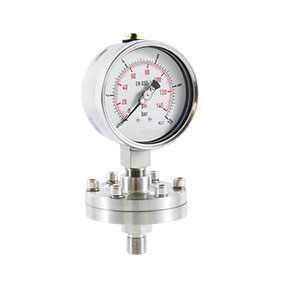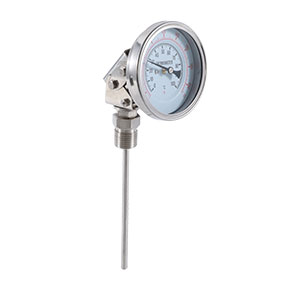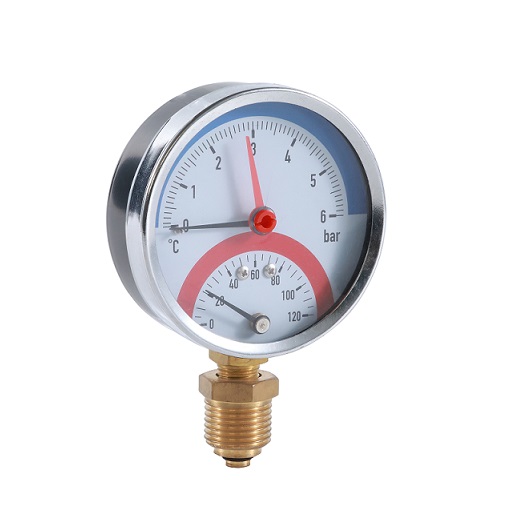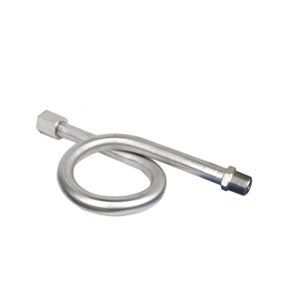What is the difference between liquid and non liquid pressure gauges?
Liquid and non liquid pressure gauges are two common pressure measuring instruments in industry, and they are widely used in different fields. Although their basic function is the same, that is, measuring pressure, there are significant differences in accuracy, stability, seismic performance, etc. due to different working principles, structural designs, and usage environments. Liquid pressure gauges are usually filled with liquid to improve stability and are suitable for high vibration environments, while non liquid pressure gauges are simpler, less expensive, and suitable for relatively stable working conditions. Understanding the difference between the two will help you choose the most suitable equipment.
1. Working Principle
Liquid filled pressure gauges usually refer to liquid-filled pressure gauges. This type of pressure gauge usually uses liquid (such as glycerin, silicone oil, etc.) to fill the case. The liquid is filled in the cavity between the dial and the pressure sensing part, which helps to reduce the vibration of the mechanical parts and improve the stability and durability of the pressure gauge. The role of liquid filling also includes reducing the swing of the pointer to ensure accurate readings, especially in high vibration environments. Non liquid pressure gauges usually do not contain any liquid filling. Their sensor components may use springs, diaphragms, or other solid materials to sense pressure changes. The working principle of non-liquid pressure gauges relies on the changes in mechanical parts, and the pressure value is measured by the deformation or displacement of these parts by pressure. This type of pressure gauge is generally suitable for low-vibration or stable environments.
2. Application areas
Liquid pressure gauges: Liquid pressure gauges are suitable for application scenarios that require high precision and may have large vibrations or shocks in the working environment due to their good seismic resistance. For example, in the fields of chemical, petroleum, metallurgy, etc., the equipment may be in a high-vibration environment, and liquid pressure gauges can effectively reduce the interference of vibration on the measurement.
Non-liquid pressure gauges: Non-liquid pressure gauges are usually used in low-vibration, stable environments, or in simpler applications. For example, some low-cost industrial equipment, household appliances, etc., non-liquid pressure gauges can meet conventional pressure measurement needs.
3. Measuring medium
Liquid pressure gauges: The liquid filler in the liquid pressure gauge can alleviate the device's response to pressure changes to a certain extent, and also improve the durability of the equipment. Commonly used liquids include glycerin, silicone oil, etc., which can also provide certain protection in high-temperature, highly chemically reactive, and highly corrosive environments.
Non-liquid pressure gauges: Non-liquid pressure gauges are not filled with liquid and usually use mechanical components directly to respond to pressure changes. Since there is no liquid buffering effect, non-liquid pressure gauges are more sensitive to rapidly changing pressure changes, but their seismic performance is poor and may not be suitable for high vibration environments.
4. Accuracy and stability
Liquid pressure gauges: Liquid pressure gauges can effectively reduce the jitter of the instrument pointer and improve the stability and accuracy of measurement due to the effect of filling liquid, especially in high vibration or dynamic pressure change scenarios.
Non-liquid pressure gauges: Non-liquid pressure gauges are usually not as stable as liquid pressure gauges, especially in environments with strong vibrations, their readings may be inaccurate or produce large errors. Therefore, this type of pressure gauge is usually used in application scenarios with small pressure fluctuations.
5. Cost and maintenance
Liquid pressure gauges: Liquid pressure gauges have a high manufacturing cost due to their complex design and the use of liquid filling, and they need to be regularly checked for liquid leakage or contamination. In addition, under extreme temperature changes, the liquid may solidify or evaporate, affecting the measurement accuracy, so additional maintenance and protection are required.
Non-liquid pressure gauge: Non-liquid pressure gauge has a relatively simple structure, low manufacturing cost, and less maintenance requirements, especially when the working environment is relatively stable, and has a longer service life.
The main differences between liquid pressure gauges and non-liquid pressure gauges are reflected in the working principle, seismic performance, accuracy, cost, and application scenarios. Liquid pressure gauges improve stability and seismic resistance through liquid filling, and are suitable for high-precision measurements in high-vibration environments. Non-liquid pressure gauges rely on mechanical components to directly respond to pressure changes. They have a simple structure and low cost, and are suitable for occasions with small pressure changes and stable environments. Choosing a suitable Medidor de pressão needs to be based on specific application requirements.
For more detailed information on instrumentos de pressão solutions, please consult Ma anshan Exact Instrument Co., Ltd. We are committed to providing customers with high-quality pressure measurement equipment and professional technical support.




